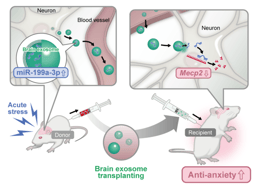Uncovering the hidden role of battery separators in silicon anode failure
Published in Chemistry

-
Why silicon battery anodes are gaining attention?
Silicon (Si) anodes are at the forefront of Li-ion battery research due to their remarkable theoretical specific capacity, which is roughly ten times that of commercial graphite anodes. This substantial capacity promises to significantly increase the energy density of Li-ion batteries, addressing the growing demand for longer-lasting batteries in electric vehicles and portable electronics. However, this potential comes with considerable challenges. During charging and discharging, Si anodes undergo massive volume expansion of—up to 300%—leading to mechanical degradation and loss of electrical connectivity. This drastic volume change also destabilizes the solid electrolyte interphase (SEI), accelerating electrolyte consumption and degrading cycling performance over repeated cycles. Despite extensive efforts to mitigate these issues through Si nanostructuring, electrolyte formulations, and new electrode binders, achieving a practical, long-lasting Si anode remains a formidable challenge.
2. Why we focused on the mechanical shutdown of battery separators?
The complexity of the interactions between Si, electrolytes, and binders, coupled with the stringent requirements for practical battery applications, necessitates ongoing innovation.Particularly, the volume expansion of micro-sized Si, coupled with its intricate electrochemical behavior, has prompted an investigation into its physicochemical interplay with other components in Si full cells, an aspect overlooked in previous studies. Therefore, a thorough understanding of the underlying failure mechanism of Si anodes from a full cell perspective is imperative to achieve prolonged cycle life. Given that separators have a relatively low modulus compared to other battery components, we hypothesized they would be vulnerable to damage from the substantial volume expansion of the Si anode. Our investigation confirmed that this expansion indeed exerts localized compressive stress on the separator, resulting in a phenomenon we term “mechanical shutdown.” This effect causes the collapse of pores within the separator, significantly hindering ion transport and inducing redox inhomogeneity, which ultimately accelerates the degradation of the Si anode. Through a combination of mechano-structural analysis and digital-twin simulations, we demonstrated that the mechanical stability of the separator’s porous structure is crucial for maintaining cycling stability in Si full cells. Our findings suggest that a separator with enhanced mechanical robustness—specifically, a Young's modulus above 1 GPa—could better withstand the effects of Si expansion. This approach moves beyond traditional focus areas, highlighting the importance of a holistic consideration of all cell components.
3. What we hope to achieve with our research
Our research aims to contribute a novel perspective to the development of long-lasting, high-capacity Si anodes by addressing the mechanical shutdown phenomena of separators, acting as a hidden culprit in the cycling degradation of Si full cells. To validate our findings, we designed a high modulus (HM) separator with the necessary mechanical stability and integrated it with a pure Si anode and a high-capacity NCMA cathode. The result was a high-areal-capacity pouch-type full cell that retained 88% of its capacity even after 400 cycles at a high charge rate, far outperforming those of previously reported Si full cells. We believe that this approach opens up new avenues for separator design and offers insights that could extend the lifespan of Si-based batteries. By tackling the hidden issue of mechanical shutdown in separators, we hope to pave the way for more reliable, practical and high-energy batteries capable of meeting the demands of future energy storage applications despite the challenges associated with unwanted volume changes.
Follow the Topic
-
Nature Communications

An open access, multidisciplinary journal dedicated to publishing high-quality research in all areas of the biological, health, physical, chemical and Earth sciences.
Related Collections
With Collections, you can get published faster and increase your visibility.
Women's Health
Publishing Model: Hybrid
Deadline: Ongoing
Advances in neurodegenerative diseases
Publishing Model: Hybrid
Deadline: Dec 24, 2025




Please sign in or register for FREE
If you are a registered user on Research Communities by Springer Nature, please sign in